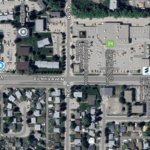Home »

Local communities get emergency preparedness support
Three local governments have been approved to receive a share of $4.2 million in provincial emergency preparedness funding.
The funding is part of the nearly $69.5-million Community Emergency Preparedness Fund (CEPF), designed to help communities prepare for, and respond to disasters.
This investment through the CEPF will support emergency support services (ESS), which provide short-term, essential supports to British Columbians impacted by disasters. It will also support emergency operations centres (EOC), equipment and emergency training at the community level.
The three local communities to get funds include ?aqam, which is getting two grants; $8,008 for ESS equipment and storage and $21,750 to go toward capacity building for an EOC.
The City of Kimberley is getting $24,970 for an EOC upgrade project.
The District of Sparwood is getting $20,000 to go toward ESS modernization.
Nearby, Creston is receiving $18,750 for EOC supplies and equipment.
“I’m pleased to see so much interest from communities across B.C. in improving ESS and increasing the capacity of their EOCs,” said Mike Farnworth, Minister of Public Safety and Solicitor General. “In B.C., local and First Nations governments lead the initial response to emergencies and disasters in their communities, and this funding will help give them the tools necessary to make sure everyone in B.C. impacted by an emergency is looked after and kept as safe as possible.”
“I know how critical it is to be prepared for any possible emergency scenario,” said Jennifer Rice, Parliamentary Secretary for Emergency Preparedness. “When it comes to emergencies in B.C., it’s not a matter of if one will happen, but when. This funding is another step we’re taking as a government to help communities be ready for when disaster strikes.”
The CEPF is a suite of programs designed to enhance the resiliency of local and regional governments, First Nations communities and their residents, a June 26 joint Ministry of Public Safety and Solicitor General and Emergency Management BC media release stated.
The province provides the funding, which is administered by the Union of British Columbia Municipalities and is divided into seven streams:
* Flood risk assessment, flood mapping and flood mitigation planning;
* Emergency support services;
* Emergency operations centres and training;
* Structural flood mitigation;
* Evacuation routes;
* Indigenous cultural safety and cultural humility training;
* Volunteer and composite fire departments equipment and training.
Emergency Management BC has been working to modernize the ESS program and has transitioned to a digital platform for delivering supports to evacuees impacted by floods and fires.
After a successful pilot program in 2019, and after being used in real-life scenarios, such as the recent flood evacuations near Williams Lake and in the Regional District of Kootenay Boundary, the evacuee registration and assistance tool has been launched province-wide.
The evacuee registration and assistance tool allow evacuees to self-register online rather than in person at a reception centre. This ensures timely supports and enables evacuees to maintain a safe physical distance during COVID-19, helping to protect them, as well as volunteers, communities and ESS partner agencies, the media release outlined.
e-KNOW







